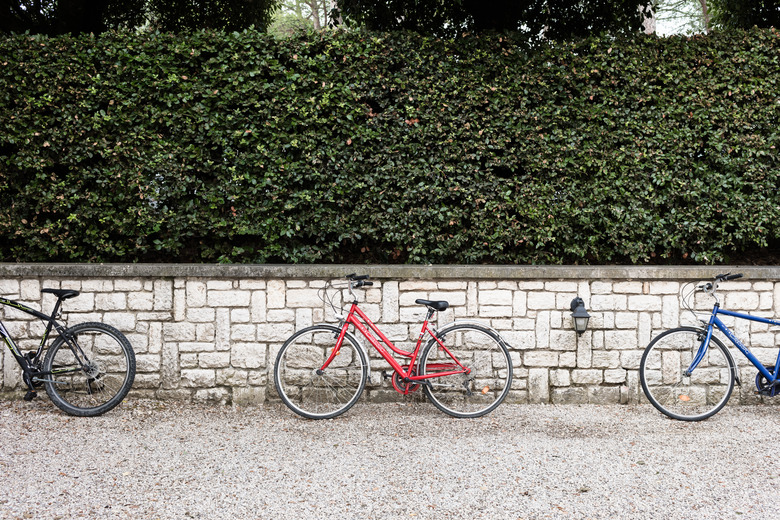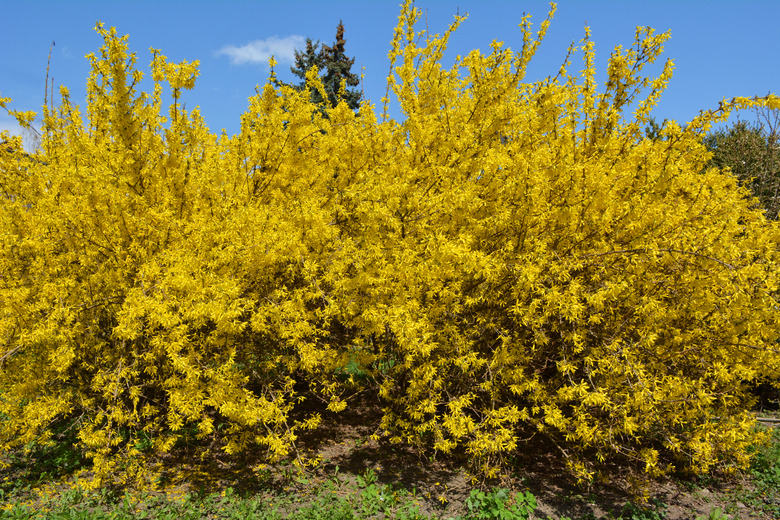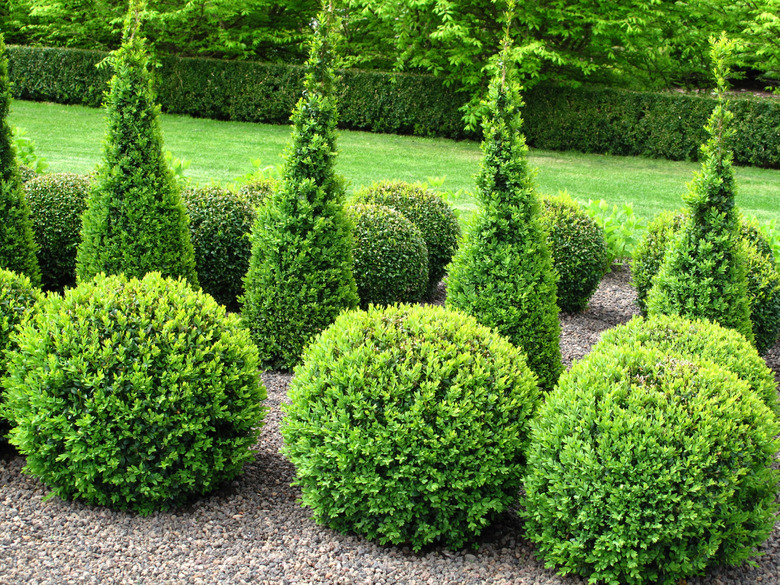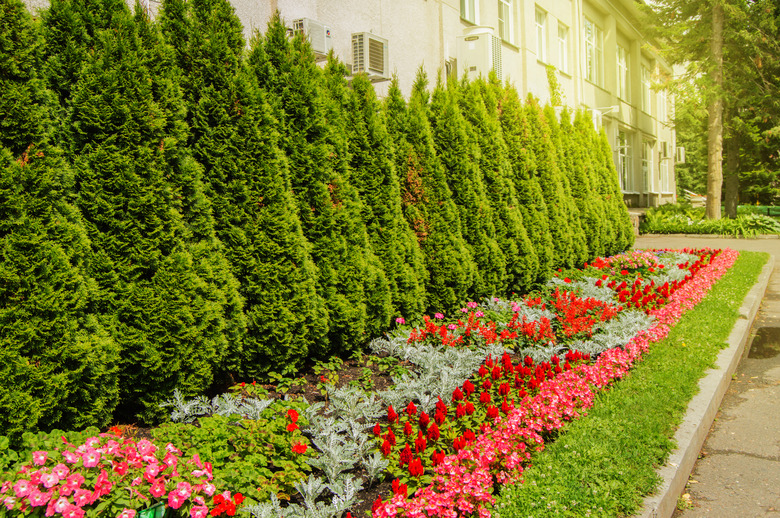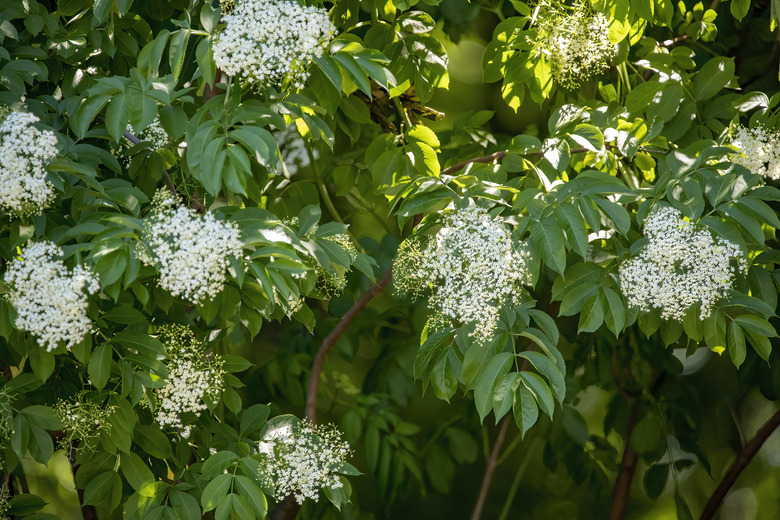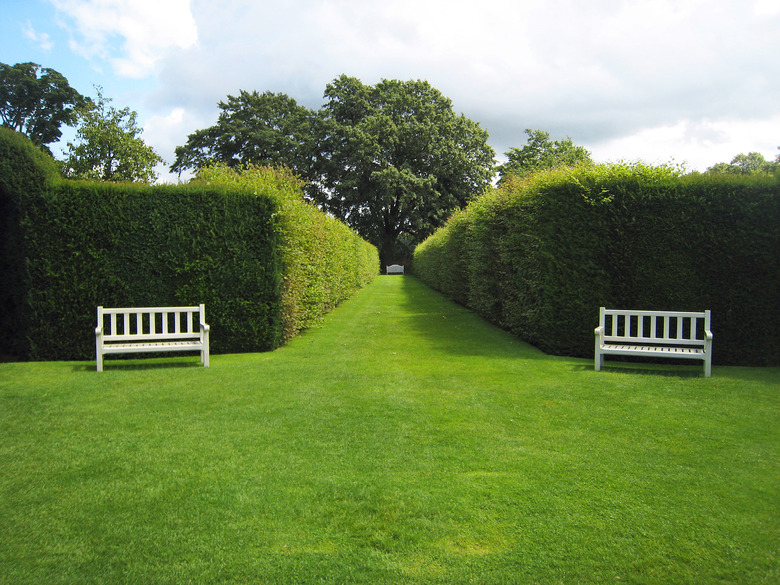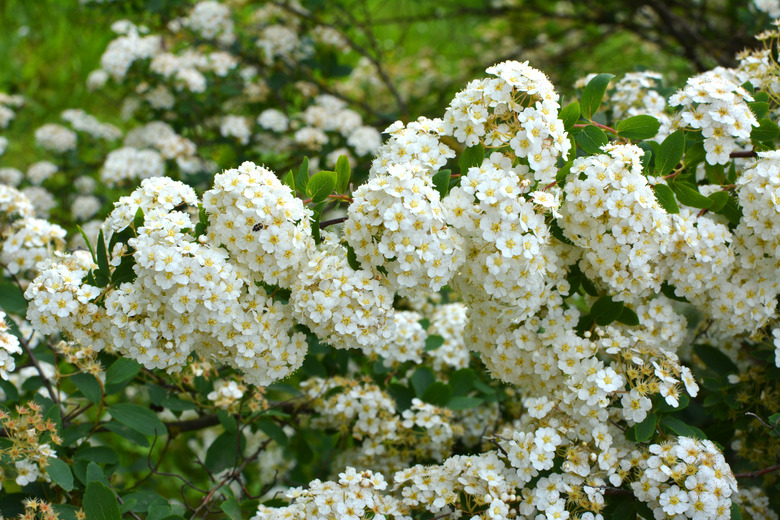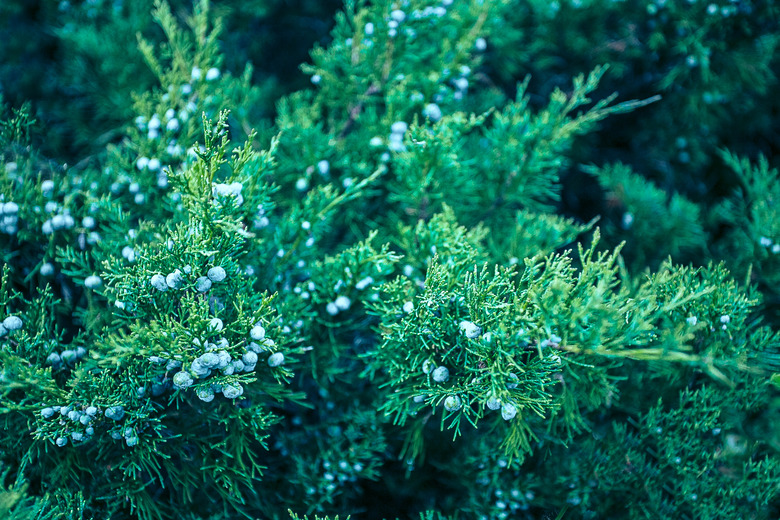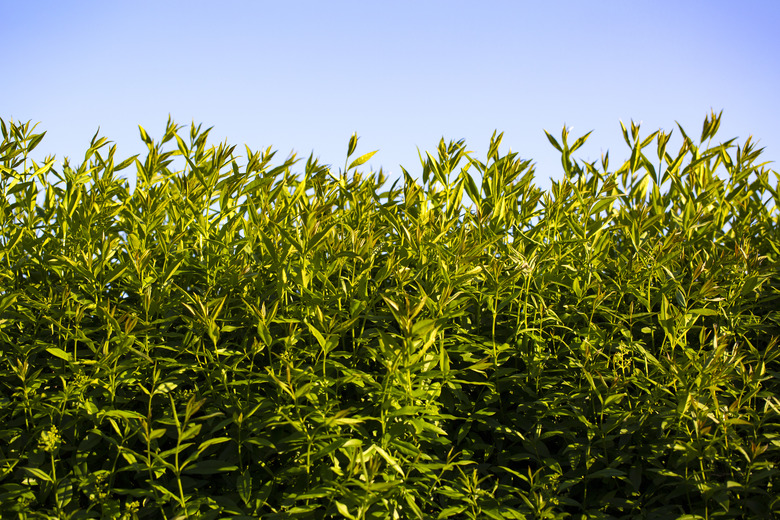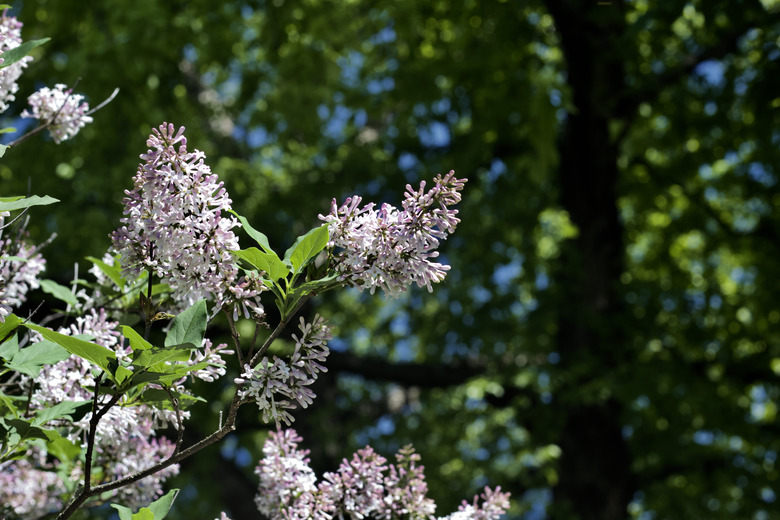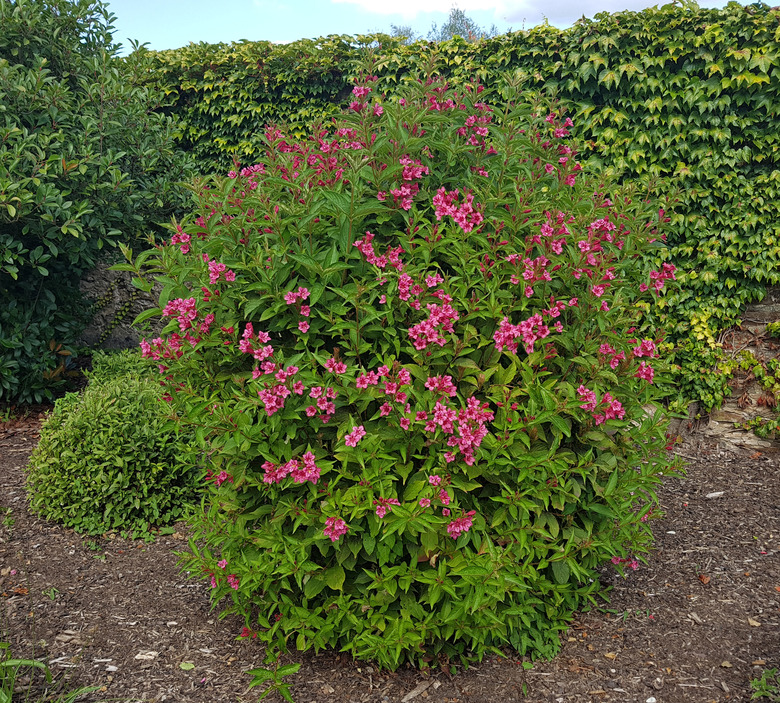The Best Bushes And Shrubs For Hedges
We may receive a commission on purchases made from links.
A hedge serves a variety of functions in the home landscape. It can set property line boundaries in a manner that's friendlier than a fence or wall. A hedge can screen off an unpleasant view. It can block unwanted foot traffic across your yard or can even enhance security if you use shrubs that are dense and thorny.
It is essential to choose shrubs that serve your intended purpose and are suitable for the growing conditions in your region. Choosing the right hedge shrubs begins with understanding the hardiness range of each species.
Looking to plant some hedges? Here are our favorite picks.
1. Forsythia
1. Forsythia
Border forsythia (Forsythia x intermedia) is a deciduous shrub that provides bright-yellow flowers in the early spring and has a very dense, multi-stemmed growth habit that makes it an ideal hedge shrub for providing privacy and security against casual intrusion. Various cultivars are available that are hardy in USDA zones 4 to 9, some of which remain only 1 to 2 feet tall, while others grow as tall as 10 feet.
Border forsythia is best where a full screening hedge is not required during its dormant period because it's a deciduous plant. This plant has attractive fall color but does not offer much in the way of winter interest, although it has a dense growth habit that will continue to define property lines even when the snow flies.
2. Boxwood
2. Boxwood
Boxwood shrubs (Buxus spp.) are broadleaf evergreens that are especially good for hedges because they keep their color year-round within their hardiness range. The small leaves and dense stem habit make them ideal privacy hedges. There are many different species and cultivars of boxwood, and you can find one appropriate anywhere in zones 4 to 9. Some boxwoods grow only 2 feet tall, while others reach heights around 20 feet. Green Gem (Buxus 'Green Gem') for example, grows well in zones 5 through 9 and grows 2 to 4 feet high, making it ideal for a formal property boundary. It prospers in both full sun and partial shade and is quite tolerant of pruning.
Although it is not suitable for the coldest climates, American boxwood (Buxus sempervirens) is an excellent choice for zones 5 through 8. It is so amenable to pruning that it is often used for topiaries.
3. Arborvitae
3. Arborvitae
Arborvitae shrubs (Thuja spp.) are very popular hedge shrubs. Their hardiness range covers much of the continental U.S. (zones 3 through 7), which makes them suitable in almost every region except the deep South. The dense growth, evergreen foliage, and willingness to accept pruning make them unparalleled as hedge and screening shrubs.
American arborvitae (Thuja occidentalis) is a large plant, normally growing 40 to 60 feet, but there are a number of dwarf cultivars that can be used for screen hedges, and even the taller cultivars accept hard pruning. The popular Thuja 'American Pillar' is suitable for zones 3 to 8 and grows very quickly with an attractive columnar habit. There are many other arborvitae cultivars that make excellent tall hedges.
4. Viburnum
4. Viburnum
For homeowners who like a hedge that produces a spring display of flowers, viburnum shrubs are good choices. The Viburnum genus includes species suitable for nearly every region — zones 2 to 9.
A particularly good variety is arrowwood viburnum (Viburnum dentatum, zones 2-8), a native deciduous shrub. This multistemmed, rounded shrub produces creamy-white flowers in late spring. The leaves are a very attractive shiny dark green, turning to red and reddish-purple in the fall. The small blue-black berries that follow the spring flowers ripen by late fall and are a big draw for songbirds. This plant is very attractive to butterflies and other pollinators. It grows 5 to 10 feet tall, making it ideal for screening hedges during the growing season. Even when the leaves fall in autumn, its multistemmed habit still provides a partial screen. It thrives with regular pruning and adapts well to both full sun and partial shade.
Other good viburnums include Korean spice viburnum (V. carlesii, zones 4-7), which has fragrant flowers and red or black berries, and the compact Viburnum opulus 'Nanum,' a short cultivar that remains under 3 feet tall.
5. Yew
5. Yew
Yews include a large number of species in the Taxus and Cephalotaxus genera, and several of them make good hedge or screening plants. Yews are needled evergreens with flattened, dark-green needles that are relatively soft to the touch. Some yews grow to be massive trees, while others are low-growing plants more suitable as foundation plantings. Some that are suitable for hedges and screens include the Taxus x media hybrids, especially:
- 'Hatfieldii,' a pyramid-shaped plant that grows to about 12 feet tall.
- 'Brownii,' a dense, rounded shrub growing 9-12 feet tall that will willingly accept pruning.
- 'Hicksii,' an excellent choice for a traditional tall hedge shrub, growing up to 20 feet tall.
Be aware that yews contain a toxin that is quite poisonous. Be especially careful about planting the varieties that produce berries in a landscape where children might be tempted to eat them.
6. Spirea
6. Spirea
While Japanese spireas (Spiraea japonica, zones 3-8) can be dangerously invasive, other species make excellent hedge shrubs. One example is bridal wreath spirea (Spiraea prunifolia, zones 5-8), an arching shrub that produces a cascade of white flowers in mid-spring. This plant has a dense growth pattern that makes for a good deciduous boundary plant. Bridal wreath spirea grows 4 to 8 feet tall with a similar spread.
Spireas are best for informal hedges, as they do not tolerate extensive pruning for shape. You can choose cultivars with white, pink, purple, or red flowers as well as those that have impressive fall foliage. Any of the low spireas with a mounded growth habit can make good flowering hedges. Some good choices include birchleaf spirea (Spiraea betulifolia, zones 4-8), a 2- to 3-foot shrub, and Nippon spirea (Spiraea nipponica, zones 4-8), a 4- to 5-foot shrub with cascading branches and thick clusters of white flowers.
7. Juniper
7. Juniper
Juniperus is a large genus of coniferous evergreens in the Cypress family (Cupressaceae). Junipers are distinguished by scale-like foliage and a spicy aroma, and many species produce blue or blackish berry-like cones that enhance winter appeal and attract birds. The many species of juniper range from low, spreading ground covers to stately towering trees. Foliage color can range from very dark green to blue-green or gray-green depending on the species and cultivar. Several medium-sized spreading varieties are especially good for hedges, including:
- 'Nick's Compact' (Juniperus chinensis 'Nick's Compact'), which grows about 2 1/2 feet high with a spread of about 6 feet in USDA zones 4-9.
- 'Sea Green' (Juniperus chinensis 'Sea Green'), a 4- to 6-foot-tall shrub that grows 6 to 8 feet wide with arching branches. It is suitable in zones 3-9.
- 'Grey Owl' (Juniperus virginiana 'Grey Owl'), a greyish-green shrub that grows to about 5 feet tall with an 8-foot spread. It is suitable in zones 2-9.
- 'Blue Arrow' (Juniperus scopulorum 'Blue Arrow') is narrow, columnar shrub that grows to 12 feet tall and 4 feet wide, making it a good screening shrub. Suitable in zones 3-7, this is a very long-living shrub that has excellent tolerance for urban conditions.
Junipers are best left to grow as an informal screening hedge since they do not tolerate hard pruning for shape.
8. Privet
8. Privet
Like boxwood, privet (Ligustrum spp.) shrubs are classic choices for hedges thanks to their thick growth habit and willing acceptance of hard pruning for shape. This is another shrub that is a good choice where you want a carefully shaped, formal-looking hedge, though it also works well as an informal screening hedge.
Some Ligustrum species are very aggressive shrubs and should never be planted in situations where they can easily escape into the wild. For example, border privet (Ligustrum obtusifolium, zones 3-7), one of the most common hedges, is regarded as a noxious weed over large stretches of the Midwest and upper East Coast.
Other privet species, such as California privet (Ligustrum ovalavoleum, zones 7-10), are somewhat less problematic, so make your choice based on the recommendations of the Invasive Plant Atlas or your local Cooperative Extension Service. Most species of privet grow 8 to 12 feet tall but can be kept pruned to almost any height you choose.
9. Miss Kim Lilac
9. Miss Kim Lilac
While some lilacs can spread overwhelmingly and grow so fast that pruning lilacs seems like a constant chore, the Miss Kim cultivar (Syringa pubescens subsp. pagtula 'Miss Kim') has all of the beauty of the common lilac (Syringa vulgaris), also known as French lilac or English lilac, but is an easy-care dwarf form with a maximum size of about 8 feet.
This multistem deciduous shrub is also more willing to accept light pruning than common lilacs. Pruning should be done immediately after the shrub flowers in the spring. This shrub is suitable for growing in most regions of the U.S. in zones 3 through 8. It has good tolerance for urban conditions and is less susceptible to the powdery mildew that can plague common lilacs.
10. Weigela
10. Weigela
Weigela is a genus of about 12 species of spring-flowering, multistemmed deciduous shrubs that are quite willing to accept pruning. Most are suitable for growing in zones 4 to 8. Sizes range from 2 to 10 feet or more depending on species and cultivar. A variety of attractive foliage colors are available, from palest green to a deep purple-burgundy.
Spring flowers range from pink to purplish-red. Many weigela cultivars put on an excellent leaf-color transition from spring to fall. Although this plant works best as a somewhat loose, informal hedge, it will accept a considerable amount of shaping, which should be done immediately after flowering has ended.
Good cultivars include Dark Horse (Weigela florida 'Dark Horse'), with burgundy foliage and deep-pink flowers; Pink Princess (W. florida 'Pink Princess'), Courtalor (W. florida 'Courtalor' CARNAVAL), with white, pink, and red flowers on the same plant; and dwarf variegated weigela (W. florida 'Variegata Nana').
Qualities of Good Hedge Shrubs
Qualities of Good Hedge Shrubs
Every homeowner will prioritize different attributes when choosing shrubs for a hedge. For some, spectacular flowers will be a priority, while others will want dense privacy boundaries. Regionality also plays a role. Some of the best hedge shrubs in the dry conditions of Tucson, Arizona may be quite different from the best species for the humid, salty air of Bangor, Maine. Aside from this, though, good hedge shrubs usually share features and growth habits that make them suitable for this purpose.
- Dense growth. Ideally, a hedge should be dense from top to bottom to serve as a privacy screen. Thus, the best hedge shrubs are often multistemmed plants rather than bushes that have a single main trunk or stem.
- Resistance to pests and diseases. It can be quite difficult to replace a single dying shrub in an established hedge row and maintain the hedge's uniform look, so try to select a species or cultivar that has a reputation for being easy maintenance in your region.
- Tolerance to pruning. Not all shrubs accept the hard, regular pruning that's required to shape them into a hedge shape. Except for hedges grown deliberately as a loose visual screen, most hedge shrubs will need to tolerate regular trimming. The best choices not only tolerate pruning but respond with extra vigorous growth.
- Fast but limited growth. An ideal hedge shrub grows quite quickly when young but has a limited mature size. You want the shrubs to assume hedge size quickly but not grow into huge shade trees.
- Year-round appeal. The ideal hedge shrub will have something to offer in every season of the year. While the spectacular spring display of azaleas might be worth it to you, such shrubs may become rather sparse in the fall and winter. Year-round attractiveness is why many evergreen shrubs are popular for hedges, but there are some deciduous shrubs that offer year-round appeal with spring flowers, summer foliage, fall color and even winter berries.
